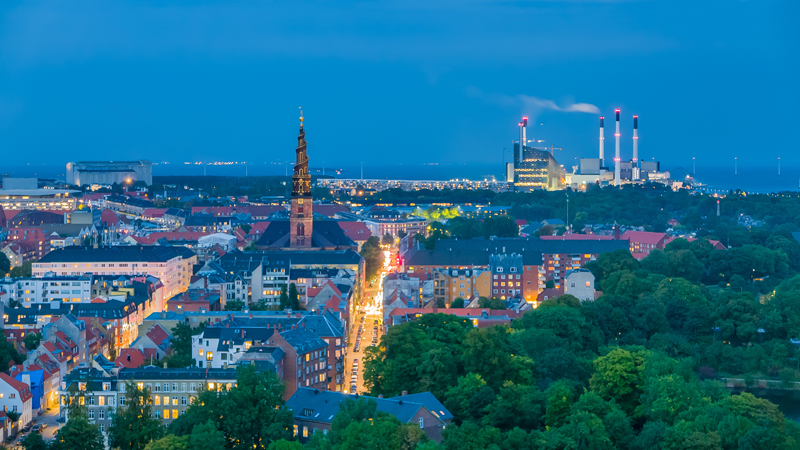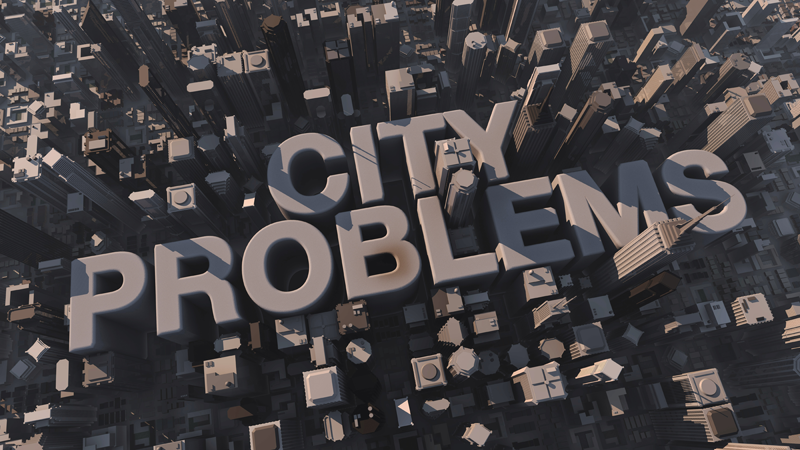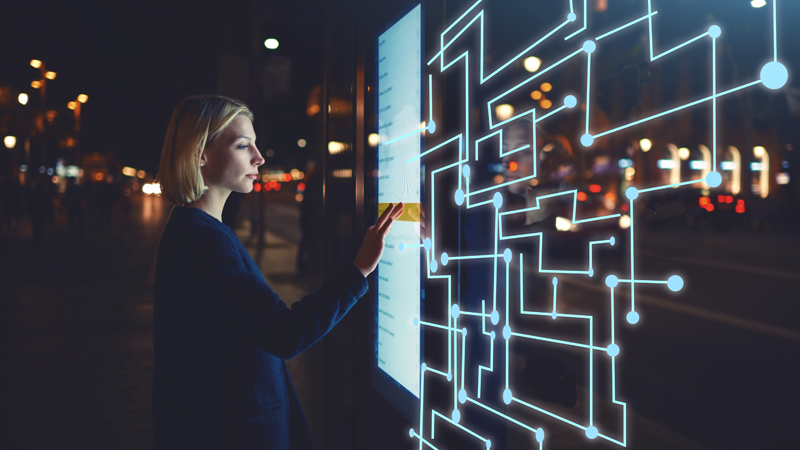Modern cities, which have accumulated a lot of social, technological and environmental problems, are becoming experimental sites for the coming digital era. The combination of the newest IT technologies with the city infrastructure and the service sector promises not only to streamline and improve the lives of citizens, but also to save money. This concept, better known as “Smart City” (Smart City), arose as a result of expanding the potential of the Internet of Things (IoT) and may vary depending on the actual needs of a particular city and its financial capabilities.

Smart City Invisible Threads
The modern city is probably one of the most controversial and at the same time attractive man-made formations. According to forecasts, by 2050 the urban population will be 60-70% of the total number of inhabitants of the planet. Of course, such a load on the urban infrastructure already today requires the development and implementation of solutions that can reduce it and bring individual areas to a new level. Transport, utilities and security are the main areas in which the capabilities of wireless digital technologies are already being successfully applied. Invisible threads of wireless communication entangle the city today, connecting its inhabitants with a huge number of various IoT devices.
Expected by 2020, the official launch of a new generation of standard 5G communications will allow the transfer of large amounts of data at ultrahigh speeds. This, in turn, can give a start to the mass use of both already known and completely new developments in the concepts of a “smart city”. It means a city in which digital and communication technologies are used to solve all sorts of infrastructural and social problems: traffic management, lighting, waste, education, healthcare, etc.

The technological solutions used should improve, maintain or optimize city-wide services, reducing resource consumption and costs. At the same time, Smart City should constantly interact (exchange information) with citizens - users of these services, analyzing the impact of the applied IoT technologies, constantly improving them and introducing new intelligent solutions.
"Wiser" all. With time...
Many companies working in the IT sphere have long since begun to develop and implement various intelligent urban solutions, in particular, Intel, Siemens, Cisco, GE Lighting, IBM and others. Amsterdam and Barcelona are considered pioneers of the practical use of smart city technologies. But rather quickly, other European, American, as well as some East Asian cities followed their example. And this year, according to the Intelligent Community Forum (ICF), the TOP-7 most intelligent cities in the world include Melbourne and Ipswich (Australia), Edmonton and Gray County (Canada), Chiayi and Taoyuan (Taiwan) and Moscow ( Russia).
However, today almost any city has at least a minimal set of “smart” elements, for example, the same video surveillance system. In large and medium-sized cities of the world, especially in high-tech countries with developed and high-quality telecommunications infrastructure, the municipal economy and the social services sector are rapidly switching to remote control of processes.
 Space situation Center TSODD, passenger traffic monitoring. Photo: Pavel L Photo and Video / Shutterstock.com
Space situation Center TSODD, passenger traffic monitoring. Photo: Pavel L Photo and Video / Shutterstock.comIt is assumed that by 2020 Smart City technology of varying degrees of complexity will work in at least 600 cities around the world. As the experience of the already operating systems of the “smart city” shows, solutions in the field of public safety and services are most in demand.
TOP 5 urban IoT solutions
Today, dozens of solutions for “smart” cities are successfully operating in the world, among which I would like to highlight the five most well-known and popular, affecting the comfort and safety of citizens.
"Smart" lantern. It is one of the first “smart” LED solutions that has long and firmly entered the daily life of many cities in the world, which will be in demand in the future. A “smart” lantern connected to the network can not only save energy, but also provide security. Able to respond to crowds of people and cars, reducing or increasing the degree of illumination. Also, because of its height, it is used as a hub for other IoT devices (surveillance cameras, sensors, etc.) involved in the citywide data collection and control system.
Parking sensors. A very useful solution for modern cities, choking on the number of cars. Facilitates the driver not only parking, but also relieves traffic in general. Studies have shown that a third of all urban traffic jams are nothing more than the result of “baring” of drivers in a certain block in search of free parking space. The sensor is built either directly into the sidewalk of a parking space, or is located on the “smart” lantern closest to it.

Sensor shot. It is part of the Gunshot technology for detecting and analyzing gunfire shots. It is installed for hidden work on rooftops or in “smart” lanterns. Allows to carry out triangulation of shooting within 3-4 meters. The program that processes this data determines both the number of shots and the shooters, which allows law enforcement agencies to make the right decisions.
Since in many countries citizens are not always in a hurry to report the shootings on the street, this decision seems to be very useful in terms of the security of the city. Shot sensors are also used successfully in some national parks to combat poaching. In addition, placed on "smart" lights, they are able to respond to other noises, such as car accidents, broken glass and even paint spraying.
Information kiosk. Touch-sensitive digital kiosks have become very popular in many cities, both with their guests and locals. In fact, this is such a street tablet, allowing you to find the necessary information about the city: map, transport routes, attractions, entertainment, etc. It also shows the user's location and is able to synchronize with the smartphone to provide additional data.

"Smart urns" Bigbelly. This is a trash can with integrated solar-powered sensor. Through wireless communications, it warns municipal services about its filling up with garbage and the need for emptying. It has a larger capacity compared to standard tanks, which allows reducing their number and improving the aesthetic appearance of the city.
How is the city made "smart"?
Although decisions on the introduction of certain elements of a “smart” city are made by local authorities, in the modern world the voice of the public is becoming increasingly important. That is, citizens can initiate the introduction of certain digital services needed by the city, and the authorities must respond to this and provide adequate funding. Ways to bring public opinion to government offices may be different, for example, through appropriate petitions.
Each city has both common, inherent and other problems, and its own, specific, which can be solved using the Internet of Things. They depend on many factors, including the particularities of the country and the region, financial capabilities, the readiness of municipal services to introduce new technologies and a number of others. However, there are several basic principles that must be adhered to before introducing technologies of the “smart city”.
First, it is necessary to study the opinion of citizens and specialists about the priority problems, the solution of which should be directed efforts and resources. In addition, residents need to understand how their lives will change using the latest technologies. In other words, the introduction of the “smart home” is preceded by the monitoring of public opinion and explanatory work of the authorities.

As a result, the authorities should have a clear understanding of the city’s problem or need, its IoT solution and the financial component. To introduce this or that technology of the “smart” city without thorough study of all the nuances, just as a tribute to fashion, will be very rash. For example, if a city has transportation problems, and the authorities, instead of motion control sensors, want to install “smart” bins, this would be the wrong decision. That is, the technology is first implemented, which is currently the most useful for the city.
To finance projects, rationally use business participation, which is no less interested in improving urban infrastructure than citizens. If a city spends many months searching for resources to implement smart technology, it is unlikely that it will be able to use it effectively in the future.
It is also very important that the solutions of the “smart” city really bring improvements and easier life for the citizens and are not duplicated in parallel with the municipal services.
"Smart" city with their own hands
Of course, so far most of the cities in the world are far from the status of Smart City. Even in countries with developed economies, the introduction of new IoT-technologies of life management of the city takes time. But the existing solutions for Smart City, no matter whether they are related to energy efficiency or traffic management, are already part of the global IoT system.

In order to use all the opportunities that the new generation of communications and the Internet of things will open soon, the digital city of the future will have to turn into a single social IoT platform (SIoT). With its help, any citizen can become, if not the author of the solution to the problem existing in his city, then, at least, the generator of ideas. In addition, the SIoT of a specific Smart City, integrating with similar systems in other cities, can share experiences and methods of solving problems, generating best practices.
Thus, through SIoT, the social function of the “smart” city concept can be maximally fulfilled, which, in fact, is its main purpose.